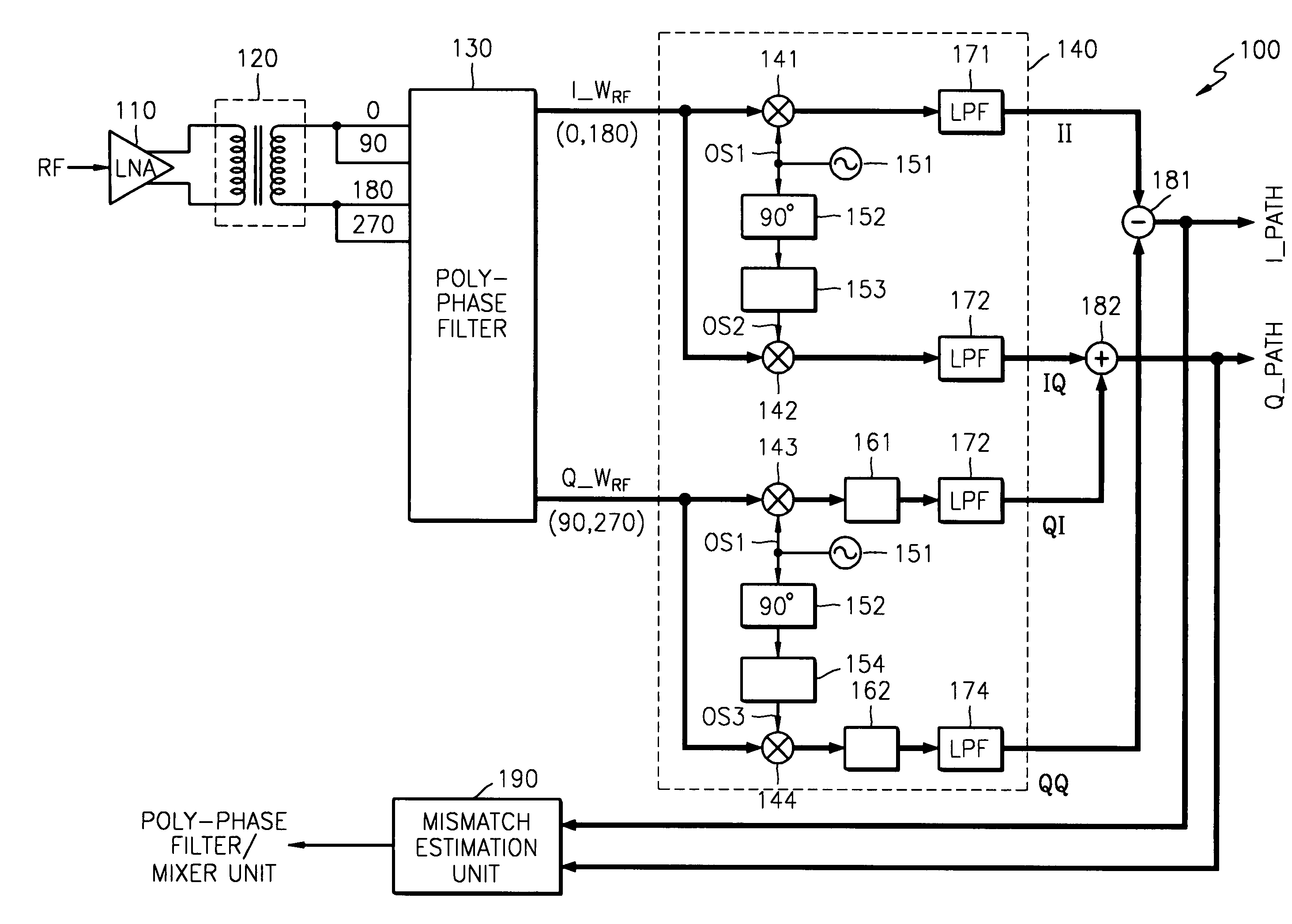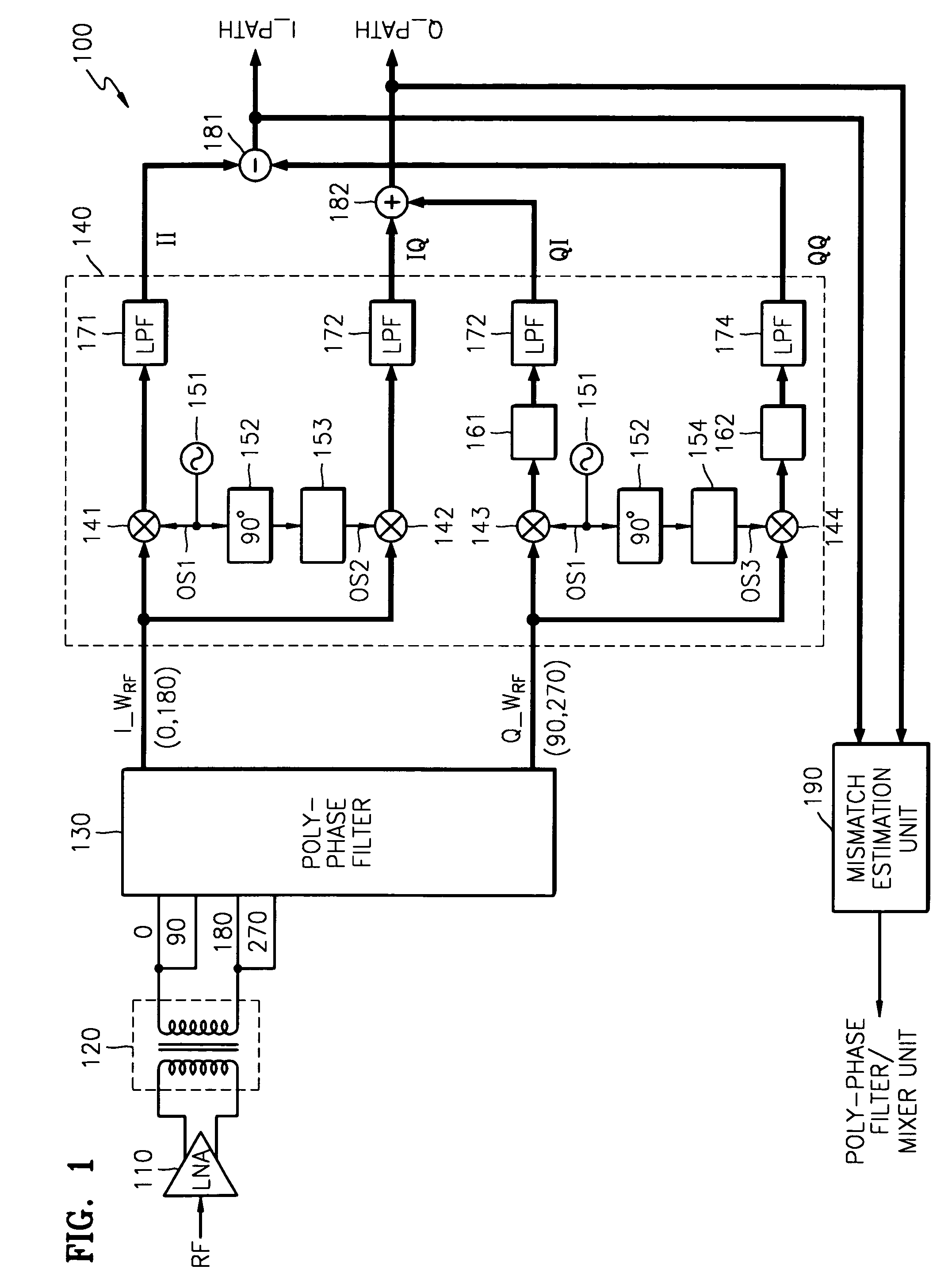Direct conversion receiver for calibrating phase and gain mismatch
a receiver and gain mismatch technology, applied in the field of direct conversion rf signal receivers, can solve the problems of phase mismatch, gain mismatch in the output signal of the mixer, and increase the error rate of the received signal, so as to minimize the distortion of the converted radio frequency rf signal
- Summary
- Abstract
- Description
- Claims
- Application Information
AI Technical Summary
Benefits of technology
Problems solved by technology
Method used
Image
Examples
Embodiment Construction
[0026]Referring to FIG. 1, the DCR according to a preferred embodiment of the present invention comprises a low noise amplifier 110, a transformer 120, a poly-phase filter 130, a mixer unit 140, a subtracter 181, an adder 182, and a mismatch estimation unit 190.
[0027]The low noise amplifier 110 receives and amplifies an RF signal. The transformer 120 converts the amplified RF signal into differential signals of 0° and 180°.
[0028]The poly-phase filter 130 receives the differential signals of 0° and 180° as inputs and outputs signals having phases of 0°, 90°, 180°, and 270°. The signals of 0° and 180°, respectively, are input into the 90° and 270° inputs of the poly-phase filter 130. The poly-phase filter 130 receives differential signals of 0° and 180° and outputs an in-phase (0° and 180°) differential signal (I_WRF), and a quadrature-phase (90° and 270°) differential signal (Q_WRF).
[0029]The mixer unit 140 comprises in-phase first and second mixers 141 and 142, quadrature-phase thir...
PUM
 Login to View More
Login to View More Abstract
Description
Claims
Application Information
 Login to View More
Login to View More - R&D
- Intellectual Property
- Life Sciences
- Materials
- Tech Scout
- Unparalleled Data Quality
- Higher Quality Content
- 60% Fewer Hallucinations
Browse by: Latest US Patents, China's latest patents, Technical Efficacy Thesaurus, Application Domain, Technology Topic, Popular Technical Reports.
© 2025 PatSnap. All rights reserved.Legal|Privacy policy|Modern Slavery Act Transparency Statement|Sitemap|About US| Contact US: help@patsnap.com



